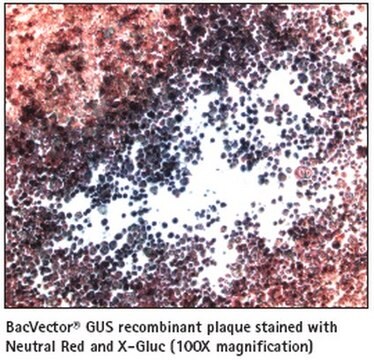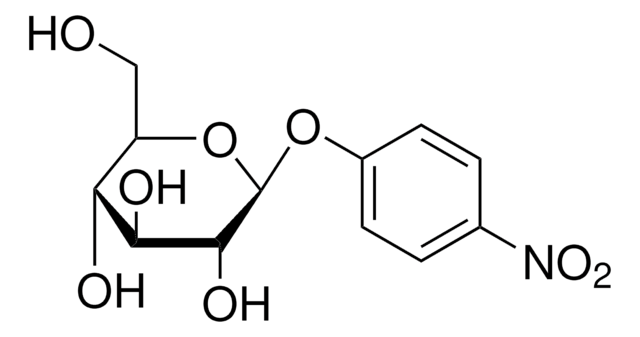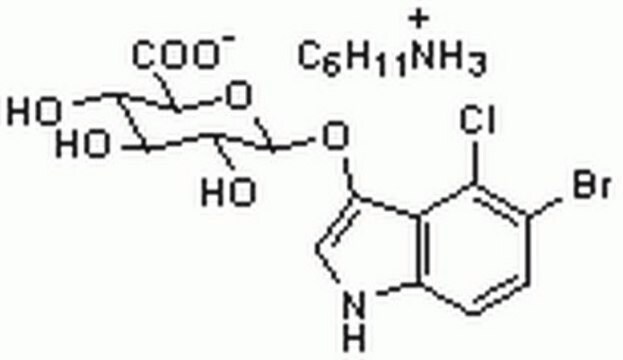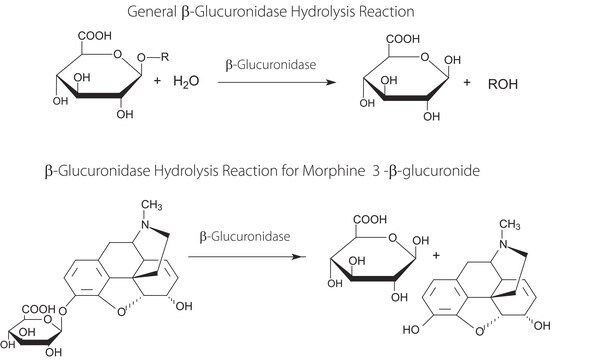GUSS
β-Glucuronidase Reporter Gene Staining Kit
Synonym(s):
β-Glucuronidase Staining Kit, Reporter Gene Kit, Staining Kit for Glucuronidase
About This Item
Recommended Products
usage
kit sufficient for 100 histochemical assays
Quality Level
technique(s)
microbe id | staining: suitable
shipped in
dry ice
storage temp.
−20°C
General description
Application
Kit is suitable for biochemical activity assays, immunological assays and histochemical staining of tissue and cells.
Features and Benefits
- Histochemical staining of plant tissues expressing the E. coli GUS enzyme
- Ideally suited to plant expression studies due to very low GUS activity in plants and high enzyme stability
- GUS does not interfere with plant cell function or viability
Other Notes
Kit Components Only
- 2× Fixation Buffer 25 mL
- 5-Bromo-4-chloro-3-indolyl β-D-glucuronide cyclohexylammonium salt, ≥98% 1 mL/vial
- Reagent A for gus staining kit 50 mL
- Reagent B for gus staining kit 200 μL
- Reagent C for gus staining kit 200 μL
Hazard Statements
Precautionary Statements
Hazard Classifications
Aquatic Chronic 3
Storage Class Code
11 - Combustible Solids
Regulatory Listings
Regulatory Listings are mainly provided for chemical products. Only limited information can be provided here for non-chemical products. No entry means none of the components are listed. It is the user’s obligation to ensure the safe and legal use of the product.
PDSCL
Please refer to KIT Component information
PRTR
Please refer to KIT Component information
FSL
Please refer to KIT Component information
ISHL Indicated Name
Please refer to KIT Component information
ISHL Notified Names
Please refer to KIT Component information
Cartagena Act
Please refer to KIT Component information
JAN Code
キットコンポーネントの情報を参照してください
Certificates of Analysis (COA)
Search for Certificates of Analysis (COA) by entering the products Lot/Batch Number. Lot and Batch Numbers can be found on a product’s label following the words ‘Lot’ or ‘Batch’.
Already Own This Product?
Find documentation for the products that you have recently purchased in the Document Library.
Customers Also Viewed
Our team of scientists has experience in all areas of research including Life Science, Material Science, Chemical Synthesis, Chromatography, Analytical and many others.
Contact Technical Service







